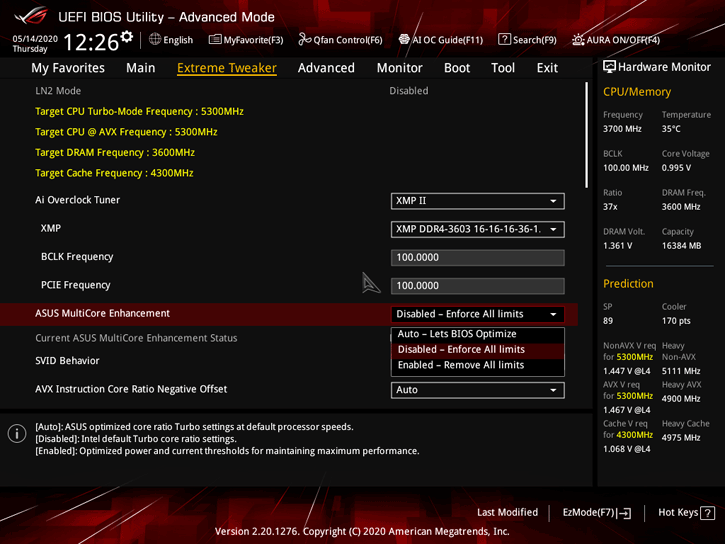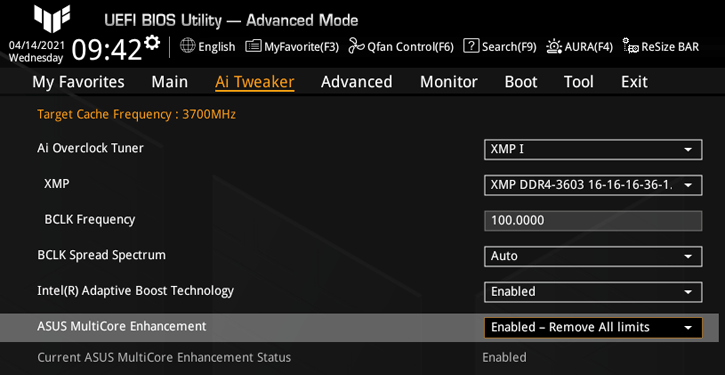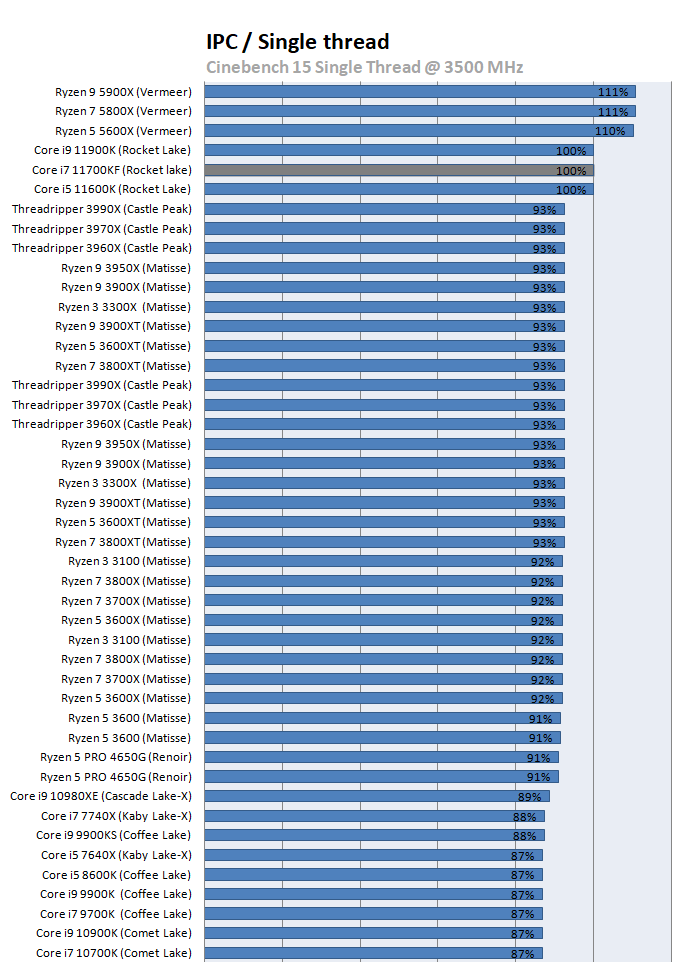Performance - IPC
Challenges of testing a processor
Each year it is getting increasingly complicated to accurately test processor performance, the motherboard manufacturers are in control of a lot of settings. Intel, on the other hand, does not release reference review motherboards anymore, thus motherboards manufacturers will do tons of tweaks 'at default' in the BIOS just to stay ahead of the competition and to spread their lineup relative for performance from mainstream towards premium. Settings can include All cores frequency locks, clock tweaks, and enhancements in power states and duration (PL2). For a motherboard review, this is all fine, however, for a processor review, we want to test as close as possible to reference performance. To bypass these challenges, in the BIOS we disable such features. An example you see below (ASUS) Intel Turbo ratio settings, see below:
Example of how we configure the BIOS for reference processor reviews
Later on, in the review, we'll also add some results with mobo tweaks enabled in a separate chapter
We expect you will see lots of reviews with higher performance numbers as many media will load up BIOS defaults and start testing without checking. We thus test at reference performance (or as close as possible) with settings as referenced by Intel. For motherboard reviews, we, of course, revert to motherboard defaults as it is well within their right to segment and optimize their lineup performance-wise.
Instructions per cycle (IPC)
This IPC test will build up and get updated over time. We lock all processor cores at 3500 MHz and fire off a single-threaded run with Cinebench. That way you can see the architecture performance of the processor clocked at exactly the same frequency. This is a single thread measurement. For many people, this is the holy grail of CPU measurements in terms of how fast an architecture per core really is. I, however, tend to say there's more to it than that and that would be higher frequency allowances, caches, and memory latency defining that per-core performance.




